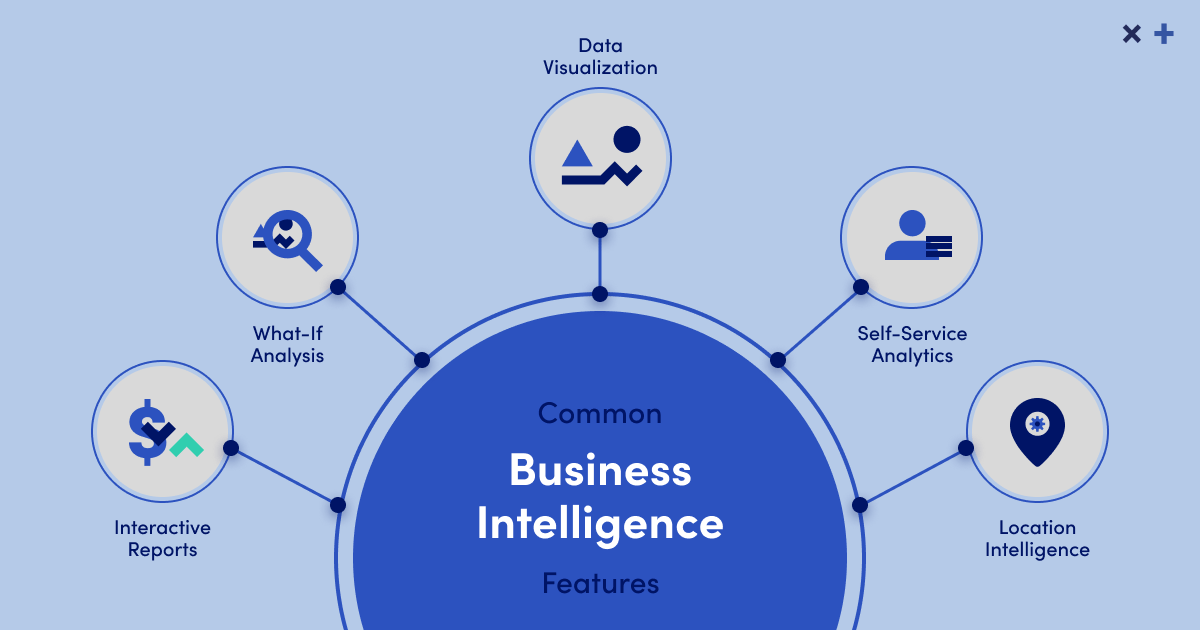Features of Business Intelligence Systems
Businesses are faced with huge volumes of data every day. To extract maximum value from them, companies increasingly turn to business analytics systems that allow them to transform raw information into valuable insights. However, the selection and implementation of such systems requires a professional approach. A data analytics consulting company plays a key role in this process, helping to determine business needs, set up analytical tools, and integrate them into the existing infrastructure.
What Are Business Intelligence Systems?
Business intelligence systems (BI systems) are programs and tools designed to collect and analyze information about a company. They help find patterns in data and improve the quality of work processes. For example, using a BI system in the purchasing department of a chain of stores allows you to analyze sales volumes, find out which products are in greatest demand, and regulate product stocks based on the data obtained. They will help the commercial department track the marginality of various products, on the basis of which they determine prices.
The graphical interface of business intelligence systems allows you to display the received data in the form of graphs and diagrams, and add buttons, videos, and other interactive elements to the screen.
The components of a typical BI application for medium and large businesses are:
- ETL process (Extract, Transform, Load) is a set of tools that connect to information sources, collect, transform, and load the received data into the BI system.
- Information warehouse – a base that contains analytical data collected from various sources, cleared of unnecessary information and logically linked to each other.
- A BI system (BI application) that allows users to connect and work with data presented in tables or diagrams.
- The client part is an application for users to develop and use reports.
The BI system works as follows:
- ETL processes collect data from various sources on a schedule, transform it, and place it in the warehouse in a uniform form;
- a data model is formed;
- users use familiar Excel and Power BI programs to work with the model.
Business intelligence systems include three main blocks:
- data sources;
- the system itself;
- user interface.
How Do Business Intelligence Systems Work?
Business intelligence systems collect information from various sources, then process it, and make it understandable for users. They can be used to filter data, collect it in summary tables, and build graphs or charts. The interface depends on the tasks facing a specific organization / its department. For example, a customer department dashboard can include data on the gender and age of buyers, the frequency of their purchases, reviews, etc. The marketing department can track the effectiveness of PR campaigns using the information on the cost of attraction, ROI, and conversions collected on the interface. The sales department’s performance can be analyzed by breaking down sales into channels, periods, and products.
Business intelligence systems show what is happening in the project, and the points that need changes / improvements. By comparing the data obtained with information from previous years, you can predict future results.
There are five main types of dashboards:
- For monitoring key indicators (sales, revenue, number of orders, conversion). It gives employees and management the ability to monitor and analyze the work of a department or company in real-time.
- For tracking projects (status, resource allocation, progress in completing tasks). It allows employees to stay up to date, and the program manager to manage deadlines, budget, and volume of work.
- For data analysis (summary statistics of departments, including the number of applications and contracts, request processing time). It involves comparing indicators, and clearly seeing where and what difficulties arise. For example, a branch needs more time to prepare applications because there are more of them, and the number of employees, on the contrary, is fewer).
- For tracking team KPIs (department/employees’ work results): helps make decisions about incentives, and bonuses, setting realistic goals for the future.
- For self-service: it can be a single table with a large number of filters that allow employees to independently explore the data, without involving an analyst.
What Are Business Intelligence Systems For?
The purpose and main goal of business intelligence systems is to collect, store, analyze, and visually demonstrate data. Large businesses and large volumes of information may require network equipment and regular technical support.
BI systems allow you to connect many users to them, each of whom will be able to work with the main program screen containing basic information (graphs, tables, and charts with analytical information about the business). Different access to data can be configured for different clients (for a marketer — about sales and advertising, for a logistician — about product balances in warehouses, etc.). If necessary, employees can obtain additional information themselves if they have access to the entire system and know how to use it.
Most often, data is contained in a form that is convenient for storing, rather than using (for example, in a table with numerous columns). The advantages of implementing business analytics systems are in providing the opportunity to work with them in a convenient form, which allows:
- Identify problem areas in work and determine growth points, and make informed decisions based on the analysis.
- Receive the necessary information to the maximum number of employees (their number is limited by the financial capabilities of the company and the terms of the contract when purchasing a business analytics system). In addition, not only internal but also external sources of material can be connected to the system. For example, for the flower business, internal sources will provide data on the number of plants in retail outlets and balances in warehouses, and external ones will provide information on the availability and cost of suppliers.
- Save the time and effort of analysts, since users can get answers to most queries on their own.
- Simplify and speed up the process of obtaining and studying information, since it reaches users in a clear, visual form, there is no need to extract information from multiple tables and additionally analyze it.
Wrapping It Up
Business analytics systems provide companies with effective tools for data analysis, forecasting, and strategic decision-making. However, their successful implementation and use directly depend on a competent approach and understanding of the unique needs of the business. Here, cooperation with a data analytics consulting firm is important, which helps not only to choose suitable solutions but also to adapt them to specific tasks. Implementation of business analytics systems is the key to a competitive advantage, helping companies effectively use their data to achieve goals and sustainable growth. If you are looking for a reliable data analytics outsourcing company, we recommend paying attention to N-iX.







